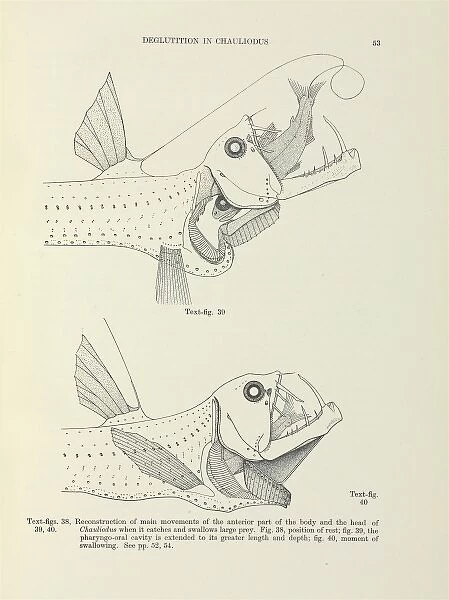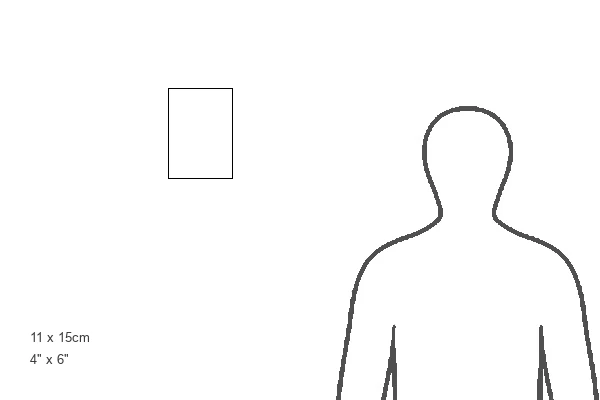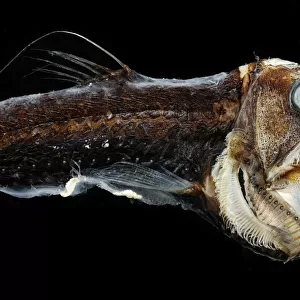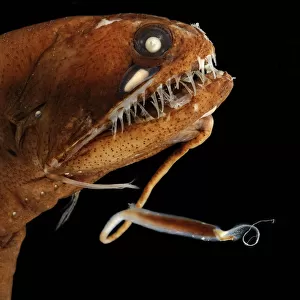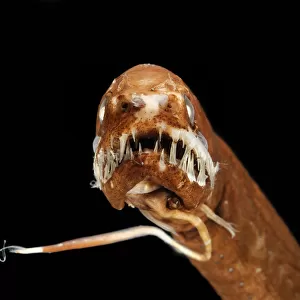Postcard : Deglutition in Chauliodus
![]()

Cards from Mary Evans Picture Library
Deglutition in Chauliodus
Illustration of main movements of the anterior part of the body and the head of Chauliodus when it catches and swallows large prey. Taken from The Feeding Mechanisms of a Deep Sea Fish by V.V.Tchernavin, 1953
Mary Evans Picture Library makes available wonderful images created for people to enjoy over the centuries
Media ID 8595329
© Mary Evans Picture Library 2015 - https://copyrighthub.org/s0/hub1/creation/maryevans/MaryEvansPictureID/10715388
Actinopterygii Anterior Anterior View Bony Fish Deep Feeding Fishes Front View Osteichthyes Ray Finned Fish Stomiiformes
Postcards (8 pack of A6)
Set of 8, A6 Postcards, featuring the same image on all cards in a set. Printed on 350gsm premium white satin card, the back of the postcard includes space to write messages and an area for the address and stamp. Size of each postcard is 15cm x 10.6cm.
Photo postcards are a great way to stay in touch with family and friends.
Estimated Product Size is 10.6cm x 15cm (4.2" x 5.9")
These are individually made so all sizes are approximate
Artwork printed orientated as per the preview above, with landscape (horizontal) or portrait (vertical) orientation to match the source image.
EDITORS COMMENTS
In this illustration from "The Feeding Mechanisms of a Deep Sea Fish" by V.V. Tchernavin (1953), we witness the main movements of the anterior part of the body and head of the Chauliodus, also known as the barbeled dragonfish or loosjaw stargazer, during the process of catching and swallowing large prey. This deep-sea fish, belonging to the order Stomiiformes and family Stomiidae, is renowned for its unique feeding behavior. The Chauliodus is depicted in an anterior view, revealing the intricacies of its feeding mechanism. With its large, protrusible mouth and piercing teeth, it waits motionless on the ocean floor, camouflaged against the dark background. Suddenly, it detects the presence of prey using its highly sensitive lateral line system and strikes with lightning speed. The illustration captures the moment just before deglutition, or the act of swallowing, as the fish's jaws close around the prey, and the anterior part of its body begins to move in a wave-like motion to help push the food down its esophagus. The Chauliodus's loose lower jaw and elongated gullet enable it to swallow prey much larger than itself. The illustration provides a fascinating glimpse into the complex feeding mechanism of this deep-sea fish, which has adapted to survive in the extreme conditions of the ocean depths. The Chauliodus, with its prehistoric appearance and extraordinary abilities, continues to fascinate scientists and marine enthusiasts alike.
MADE IN THE UK
Safe Shipping with 30 Day Money Back Guarantee
FREE PERSONALISATION*
We are proud to offer a range of customisation features including Personalised Captions, Color Filters and Picture Zoom Tools
SECURE PAYMENTS
We happily accept a wide range of payment options so you can pay for the things you need in the way that is most convenient for you
* Options may vary by product and licensing agreement. Zoomed Pictures can be adjusted in the Basket.


